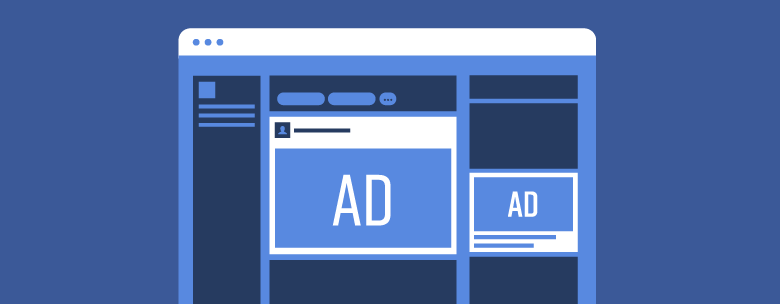
Budgeting Smartly: How Much Do Facebook Ads Cost? (UPDATED)
Understanding the cost of Facebook Ads is crucial for creating an effective advertising strategy that aligns with your budget. Facebook's ad pricing can vary significantly based on several factors, including your industry, target audience, and campaign objectives. Here’s a comprehensive overview of Facebook Ads costs in 2024, including how costs are determined and tips for managing your budget effectively.
Understanding Facebook Ads Pricing
Facebook Ads operate on a bidding system, where advertisers compete for ad space based on their budget and target audience. Costs are influenced by various factors, including:
- Bidding ModelCost Per Click (CPC): You pay for each click on your ad. This model is suitable for campaigns focused on driving traffic to your website.
Cost Per Thousand Impressions (CPM): You pay for every 1,000 times your ad is shown. This model is ideal for brand awareness and visibility campaigns.
Cost Per Action (CPA): You pay for specific actions taken by users, such as conversions or sign-ups. This model is useful for performance-based campaigns.
- Ad Auction SystemAuction Mechanics: Facebook Ads use an auction system where your bid amount, ad relevance, and competition influence the cost. Higher competition for a specific audience or ad placement can drive up costs.
Ad Relevance: Facebook rewards relevant and high-quality ads with lower costs. Ads with higher engagement and better relevance scores generally cost less.
- Target AudienceAudience Demographics: Costs can vary based on the size and specificity of your target audience. Niche audiences may be more expensive due to higher competition.
Geographic Location: Ad costs can differ based on geographic targeting. Ads targeting high-income areas or competitive markets often have higher costs.
- Ad PlacementPlacements: Costs can vary depending on where your ads appear, such as in the News Feed, Stories, or the right-hand column. More prominent placements often cost more.
Device and Platform: Costs may differ based on whether your ads are shown on mobile devices or desktop, and on which platform (Facebook, Instagram, Audience Network).
Current Cost Estimates for Facebook Ads
As of 2024, here are some average cost estimates for Facebook Ads:
- Cost Per Click (CPC): Typically ranges from $0.50 to $3.00. Costs can vary depending on the industry, audience targeting, and ad competition.
- Cost Per Thousand Impressions (CPM): Generally ranges from $5.00 to $15.00. Higher competition or more targeted audiences can increase CPM rates.
- Cost Per Action (CPA): Varies widely based on the type of action and industry. Common CPA ranges from $10.00 to $50.00, with higher costs for more complex actions like purchases or sign-ups.
Factors Affecting Facebook Ad Costs
- Ad Quality and RelevanceAd Relevance Score: Facebook assigns a relevance score based on user engagement and feedback. Higher scores often lead to lower costs.
Creative Quality: Well-designed and engaging ads are more likely to perform better and cost less.
- CompetitionIndustry and Niche: Highly competitive industries (e.g., finance, insurance) tend to have higher ad costs due to increased competition for ad space.
Seasonality: Costs may rise during peak seasons or holidays when competition for ad space is higher.
- Budget and Bid StrategyDaily vs. Lifetime Budget: Decide whether to set a daily budget or a lifetime budget. Daily budgets spread costs over a single day, while lifetime budgets allow flexibility over the campaign’s duration.
Bid Amount: Setting a higher bid can increase your chances of winning the auction, but it may also drive up costs. Optimize bids based on your campaign goals and budget.
Tips for Managing Your Facebook Ads Budget
- Define Clear ObjectivesSet Goals: Clearly define your campaign objectives, such as increasing website traffic, generating leads, or boosting sales. Align your budget with these goals to ensure effective spending.
- Monitor and AdjustTrack Performance: Regularly review ad performance using Facebook Ads Manager. Analyze key metrics like CPC, CPM, and CPA to assess cost efficiency.
Optimize Campaigns: Make data-driven adjustments to your campaigns, such as refining targeting options, adjusting bids, or improving ad creatives to lower costs.
- Test and IterateA/B Testing: Run A/B tests to compare different ad variations and identify the most cost-effective options. Test various headlines, images, and call-to-actions to optimize performance.
Experiment with Placements: Explore different ad placements to find the most cost-effective options for your campaigns.
- Utilize Facebook’s Budgeting ToolsAd Budget Calculator: Use Facebook’s built-in budget tools to estimate potential costs and set appropriate budgets based on your goals and audience.
Campaign Budget Optimization: Enable Facebook’s Campaign Budget Optimization (CBO) to automatically allocate your budget across ad sets based on performance.
- Leverage Audience InsightsRefine Targeting: Use Facebook’s Audience Insights to understand your target audience better and refine your targeting to improve ad relevance and reduce costs.
Lookalike Audiences: Create Lookalike Audiences to reach new users similar to your best customers, potentially improving cost efficiency.
Conclusion
Understanding and managing Facebook Ads costs requires a strategic approach that considers various factors influencing pricing. By leveraging effective bidding strategies, optimizing ad quality, and utilizing Facebook’s tools, you can maximize your ad performance while staying within budget. Regularly monitor and adjust your campaigns based on performance data to ensure cost-effective results and achieve your advertising goals.